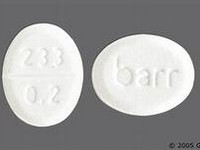Ketamine

Ketamine
CLINICAL USE
Anaesthetic agent, analgesicDOSE IN NORMAL RENAL FUNCTION
All doses are expressed as the base: 1.15 mg ketamine hydrochloride ≡1 mg of baseAnaesthesia: IM Short procedures: initially 6.5–13 mg/ —kg (10 mg/kg usually gives 12–25 minutes of surgical anaesthesia)Painful diagnostic manoeuvres: initially —4 mg/kgIV Injection: Initially 1–4.5 mg/kg over at least —60 seconds (2 mg/kg usually gives 5–10 minutes of surgical anaesthesia)IV Infusion: Induction total dose of —0.5–2 mg/kg; maintenance 10–45 mcg/kg/min; adjust rate according to response if infusion requiredAnalgesia: IM: 1.5–2 mg/kg —IV Infusion: 2–3 mg/kg or infusion rate —5–10 mg/hour of a solution of 5 mg/mLPHARMACOKINETICS
DOSE IN RENAL IMPAIRMENT
GFR (mL/MIN)
DOSE IN PATIENTS UNDERGOING RENAL REPLACEMENT THERAPIES
IMPORTANT DRUG INTERACTIONS
Potentially hazardous interactions with other drugsAdrenergic-neurone blockers: enhanced hypotensive effectAntihypertensives: enhanced hypotensive effectADMINISTRATION
Reconstition
–Route
IV bolus, IV Infusion, IMRate of Administration
Injection: over at least 60 seconds Infusion: Depends on clinical indicationComments
For infusion add to glucose 5% or sodium chloride 0.9%, dilute to 1 mg/mL. In the USA can dilute to 2 mg/mL in fluid restricted patients (Dollery)Incompatible with diazepam and barbituratesUse infusion solutions within 24 hours 100 mg/mL strength must be diluted with an equal volume of water for injection, sodium chloride 0.9% or glucose 5% before useMinimum volume 50 mg/mL (undiluted). (UK Critical Care Group, Minimum Infusion Volumes for fluid restricted critically ill patients, 3rd Edition, 2006)OTHER INFORMATION
See how to identify renal failure stages according to GFR calculation
See how to diagnose irreversible renal disease
Home








